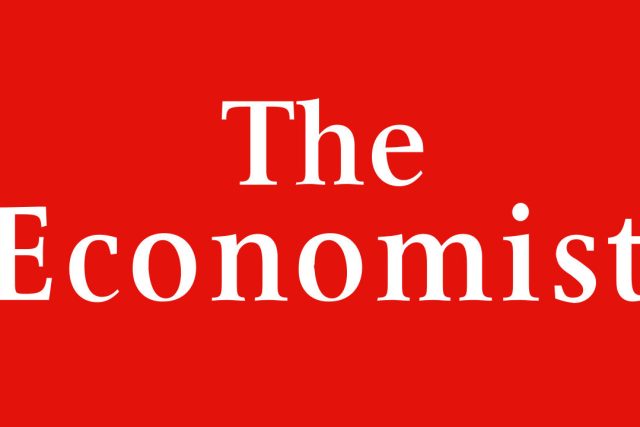The price of Brent crude has a decent claim to be the world’s most important number. Two-thirds of the 100m barrels a day of oil traded globally derive their price from it. So do millions of futures contracts that buyers and sellers employ to manage risk. Some governments use the oil price to set tax rates; customers, for their part, are exposed through heating-oil and petrol prices. Dated Brent, as the benchmark is formally known, also anchors markets beyond petroleum. It sets the price for liquefied natural gas in energy-guzzling Asia. And as an indicator for global economic health, it shapes the decisions of the world’s powerbrokers, from America’s Federal Reserve to China’s strategic planners.
The four-decade-old index is named after a tiny cluster of wells some 190km north-east of the northernmost islands of Scotland. That it still wields such clout is a wonder—and, increasingly, a danger. The crude transactions that Platts, a price-reporting agency, observes to calculate the Brent price have become ever rarer, making it easier for traders to sway prices. So Platts is introducing a fix: for deliveries dated June 2023 onwards, it will add transactions of West Texas Intermediate (wti) Midland, an American crude, similar in quality to Brent, to the pool from which the benchmark is calculated, marking the first time oil from outside the North Sea will be included. How the experiment unfolds will determine whether trust in Brent endures, and whether the world’s biggest commodity market continues to function.
Worries that Dated Brent might become insufficiently liquid have a pedigree. Output at the eponymous field peaked in 1984; now just two or three cargoes a month are loaded. Starting in 2002, four blends from other fields (one British, three Norwegian) were added to the pool. This buoyed volumes of Brent-graded cargoes, facilitating price discovery. It also made the price-reporting agencies’ job fiendishly complex. To discourage “squeezing” (attempts to drive up prices by hoarding cargoes) Dated Brent is based on the price of the cheapest blend in the pool as traded in London during a daily window. But each blend differs slightly from the original Brent—in density and sulphur content—requiring adjustments to ensure fair competition.
These additions have bought time but failed to solve the fundamental problem: North Sea oil production has been steadily falling. Campaigns to corner the market have multiplied. They are especially likely in the summer, when maintenance at wells means even less oil is produced, says Adi Imsirovic, a former oil-trading chief at Gazprom, an energy giant. It was becoming plausible that doubts about the benchmark could one day cause market participants to declare millions of contracts invalid. Change was needed to avert chaos.
Over a barrel
In theory, the market could have crowned an index from much bigger oil-production hubs than Europe, such as the Persian Gulf or Russia, to replace Brent. To gain credibility, benchmarks have to tick many boxes, notes Paul Horsnell of Standard Chartered, a bank. Having sufficient production of the underlying crude is one of them, and it is where Brent struggles. But aspiring substitutes have bigger flaws. Some are dominated by a single buyer or seller; many are impaired by distorting tax regimes, feeble rule of law and political interference. Despite trying for years, none of Brent’s rivals has managed to break out, says Colin Bryce, a former commodities boss at Morgan Stanley, another bank. The sole well-functioning alternative to Brent, which tracks prices of wti cargoes delivered in Cushing, Oklahoma, to satiate America’s home market, is too parochial.
So the Brent show needed to go on. One way to prolong it might have been to add Johan Sverdrup, a prolific Norwegian field, into the Brent basket. The problem is that Sverdrup’s high density and sulphur content would have made it the odd one out. Such an addition may also have given too much power to Equinor, Norway’s state driller. Midland has issues, too. To make it comparable to North Sea grades, Platts will have to estimate and adjust for the cost of ferrying oil from America’s Gulf Coast to Rotterdam, making the index still more unwieldy. But the blend is similar to Brent, and the volumes of it delivered to Europe have surged of late, meaning it is a good mirror of oil demand in the bloc.
Because Brent deliveries are priced up to 30 days in advance, the inclusion of Midland started coming into force in May. The market so far seems to be accepting the change. The price difference between Brent forwards (the purchase of cargoes in advance) and futures (financial bets on the future spot price), which is positive in a healthy market, has returned to near usual levels, notes Mr Imsirovic. It had contracted when the change was first discussed.
Risks remain. One is that Midland swamps the benchmark. In April 1.1m barrels of the stuff landed in Europe, more than the other five Brent grades combined. Had it been part of the basket in 2021, Argus, a rival to Platts, estimates that Midland would have set the price of Brent 68% of the time. So far, though, Midland appears to be chosen less often, perhaps because its inclusion in the basket is creating a bigger market for it, boosting its value.
Another worry is that the change could favour a coterie of marketmakers, such as Glencore and Trafigura, that account for a large share of Midland shippings, and which may now be the only ones able to keep track of how Dated Brent is formed. The cast of Brent barons has evolved over time, however, suggesting barriers to entry are surmountable. In the 1980s Europe’s once-dominant oil firms were supplanted by Japan’s mighty trading houses, which were themselves dethroned by Wall Street banks at the turn of the millennium. The new-look benchmark is already enticing new players. In May Koch Industries, an American conglomerate, sold its first forward Brent cargo in nearly a decade.
The biggest risk may be of a different nature. Tweaks to Brent used to emerge from within the oil industry. This time the initiative has come from a price-reporting agency, Platts, which wants to pre-empt a crisis with its own solution. Now that a precedent has been set, insiders worry that the result could be endless tinkering, needlessly raising questions about Brent’s robustness—the very outcome price-reporting agencies want to avoid.
In 1976 the nymex potato-futures market, based on a red variety from Maine, imploded after speculators holding 1,000 contracts involving 23,000 tonnes of the crop failed to deliver on time. At fault were reckless attempts to squeeze supply, such as coaxing buyers into rejecting cartloads of the stuff on the pretext that they did not meet standards. Investors got burnt. jr Simplot, America’s potato prince, was still compensating counterparties a decade later. No other potato price has since managed to gather such clout. Making a hash of a Brent revamp would leave many more people holding a sizzling-hot spud. ■



The Most Read
Сryptocurrencies
Bitcoin and Altcoins Trading Near Make-or-Break Levels
Financial crimes
Thieves targeted crypto execs and threatened their families in wide-ranging scheme
Financial crimes
Visa Warning: Hackers Ramp Up Card Stealing Attacks At Gas Stations
News
Capitalism is having an identity crisis – but it is still the best system
Uncategorized
The 73-year-old Vietnamese refugee is responsible for bringing Sriracha to American consumers
Uncategorized
Electric Truckmaker Rivian, Backed By Amazon, Ford, Raises Whopping $1.3 Billion